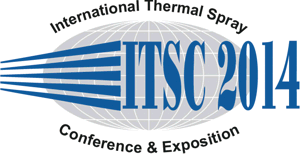
|
3852 |
|
Thursday, May 22, 2014, Hall A 4:40 PM Quality, Enviroment, Health & Safety |
|
Development of thermally-sprayed Ca2Fe2O5 -based coatings for thermoelectrical applications |
|
Maria Manuel Barbosa* / Fraunhofer Institut für Werkstoff- und Strahltechnik (IWS)
Abt. Thermische Beschichtungsverfahren, Deutschland Roberto Puschmann / Fraunhofer IWS , Germany Folofteia-Laura Toma/ Fraunhofer IWS , Germany Hans-Peter Martin/ Fraunhofer IKTS, Germany Sven Thiele/ Fraunhofer IKTS, Germany Lutz-Michael Berger/ Fraunhofer IWS, Germany Christoph Leyens/ Fraunhofer IWS, Germany Eckhard Beyer/ Fraunhofer IWS, Germany |
|
Thermoelectric generators are devices that allow the capture of heat, in particular waste heat, and its transformation into electrical energy. The conventional thermoelectric materials are composed of rare, toxic and expensive elements, like Pb, Sb, and Te. In a conscious environmentally friendly society, thermoelectric materials consisting of nonhazardous and inexpensive elements, for large devices, are highly desirable. Oxide thermoelectric materials are now emerging as a safer and cheaper alternative, though with lower efficiency. In this paper, thermal spraying is presented as a potential cost-effective alternative for the manufacture of large area thermoelectric generators (TEG). Besides electrically isolating and conducting coatings the thermoelectric active oxide coatings are the key for the production of TEG by thermal spraying. P-semiconductor Ca2Fe2O5 is a promising novel thermoelectric material, which contains only abundant and non-hazardous elements and melts without decomposition, making it suitable candidate for thermal spray. Since Ca2Fe2O5 is not commercially available it had to be synthesized from the individual oxides. Afterwards a spray feedstock powder was prepared by agglomeration and sintering. Then coatings were deposited using different processes (APS, HVOF). Attempts with the use of suspensions were also made. Coatings were characterized by means of microstructural analysis and phase compositions. The thermoelectric properties (Seebeck coefficient, electrical and thermal conductivity) of both powder and coatings have been measured. |